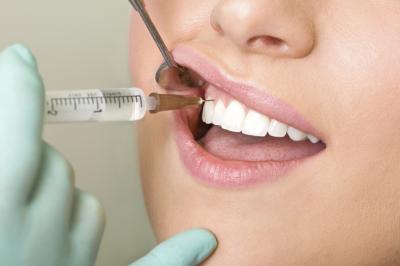 Local Anesthesia is administered in many cases, not just in the Dental practice but various fields in the medical science. In Dentistry, there are several conditions where the administration of local anesthesia is enough to localize the removal of pain to carry out the dental procedures. The local anesthesia is indicated whenever it is desirable to keep the patient in the state of consciousness while insensibility to pain is produced in the teeth and the supporting structures, like the gingiva, buccal tissues and tongue. In general, local anesthesia is used to render the teeth and supporting structures insensitive to painful procedures. Specifically, it is used for the following in the different sections of Dentistry:
Local Anesthesia is administered in many cases, not just in the Dental practice but various fields in the medical science. In Dentistry, there are several conditions where the administration of local anesthesia is enough to localize the removal of pain to carry out the dental procedures. The local anesthesia is indicated whenever it is desirable to keep the patient in the state of consciousness while insensibility to pain is produced in the teeth and the supporting structures, like the gingiva, buccal tissues and tongue. In general, local anesthesia is used to render the teeth and supporting structures insensitive to painful procedures. Specifically, it is used for the following in the different sections of Dentistry:
Oral Surgery
In the Oral Surgerical procedures, Local anesthesia is primarily used for the Extraction of teeth and the fractured roots
- Odontectomy – Removal of tooth which is embedded deep into the jaw, and that can include even removal of a small part of the bone
- Treatment of Alveolalgia – A condition where the bone socket doesn’t heal properly and the blood clot disintegrates after the tooth was extracted, and this leads to pain and bad odor.
- Alveolectomy – The surgical removal of part of the jaw bone, primarily to assist in proper placement and fitting of the dental prosthesis.
- Apicoectomy – A procedure where the end root tip is removed because the Root Canal treatment was contraindicated, or had failed.
- Incision and drainage of localized abscesses – The abscess formed around the root, or in the Periodontium is due to the infection caused in that area.
- Removal of cysts, residual infection areas, hypertrophic tissues and neoplastic growths, ranula and salivary calculi – These are all the extra growths in the oral cavity having their own causes and features. Removal of any of these with the different methods would need the use of Local anesthesia.
- In the treatment of Tic Douloureux by producing prolonged anesthesia with a combination of a local anesthetic agent and alcohol injection, for blocking the involved nerve – This is the Trigeminal Neuralgia where anesthesia is given along with alcohol for long-term effects.
- A therapeutic test to localize the source of vague pain about the face
Conservative Dentistry
In the Endodontic and Conservative dentistry procedures, these are the indications for the usage of Local anesthesia:
- Cavity preparation – This always does not indicate the usage of LA, but most of the times when the bur usage triggers a lot of pain.
- Crown and bridge abutment preparation – After the root canal treatment, the crown preparation is done on the same tooth, or when there are missing teeth, the adjacent healthy teeth are prepared for the bridge placement.
- Pulpotomy or pulpectomy – Removal of pulp of either the coronal area, or the entire pulp if infected.
Periodontology
- Surgical treatment of periodontal diseases like Periodontitis, where the gingival flap is needed to be reflected.
- Deep scaling and prophylaxis treatment
- Mucogingival surgical procedures, surgeries like the Guided Tissue Regeneration etc.
Prosthodontics
- Giving denture patients relief from sore spots which are painful even though dentures have been relieved.
- Implant placement – Whenever a Dental implant is placed, it requires the Local anesthesia for the procedure.
- During the removal of the Torus / Tori which cause problems in placement of the dentures.
Orthodontia
The procedures where the Separation of teeth is done, there is surgical involvement too and this requires the Local anesthesia administration to avoid any pain to the patient.
Radiology
To prevent gagging and retching caused by the contact of film with palatal tissues and posterior part of oral cavity. These tissues or the areas are anesthetized before placing the film. In these cases usually surface anesthesia is used.
Check out the Contraindications of Local Anesthesia, Composition of Local Anesthesia, and more info about the Anesthetic solutions.
Note: This information was taken and modified from Manual of Local Anesthesia in Dentistry by AP Chitre
Leave a Reply